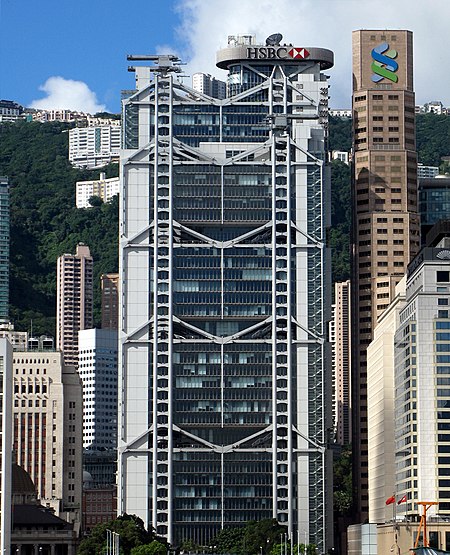Dr. N. Subramanian
General Sponsor


Joined: 21 Feb 2008
Posts: 5521
Location: Gaithersburg, MD, U.S.A.
|
 Posted: Wed Dec 05, 2012 6:18 pmPost subject: Feng Shui and Tall Structures Posted: Wed Dec 05, 2012 6:18 pmPost subject: Feng Shui and Tall Structures |
 |
|
|
Feng Shui and Tall Structures
Feng shui ( literally translated as "wind" and "water") is the art of placing objects to bring about yin-yang balance. In the West, feng shui seems like just another interior-design fad; But in Hong Kong it's taken very seriously.
One school looks at buildings in relation to mountains or bodies of water. It's ideal, for example, for a building to face out to sea with a mountain behind it. (Is it coincidence that this allows for the best views and breezes?) Another school focuses on shapes in the immediate environment; triangles, for instance, give off bad feng shui. Both schools are concerned with the flow of energy. Entrances are placed to allow positive energy to flow in, and objects such as mirrors are used to deflect negative energy. Cities are often short of such natural feng shui improvers as babbling brooks, but not to worry: a fish tank is a fine alternative.
The following is the case study of two tall buildings
Case Study 1: Bank of China

Bank of China Tower
In 1985 HSBC finished a steel-and-glass structure that dwarfed the old Bank of China, whose officials in turn commissioned the Chinese-American architect I.M. Pei to build a bigger, better headquarters, which opened in 1990.
Although it's not as innovative as the HSBC skyscraper, the Bank of China Tower is a masterful, twisting spire of replicating triangles. As the first building to break the ridgeline of Victoria Peak, it dominates Hong Kong's landscape and embodies the post-handover balance of power. Its 43rd-floor observation deck also offers panoramic, uncrowded Central views.
Feng Shui Assessment:The tower has some of the worst feng shui in town. Some say that because the building thins at the top, it resembles a screwdriver�one that's drilling the wealth out of Hong Kong; others prefer the metaphor of a knife into the heart of the SAR (Special Administrative Region). The two antennas sticking out of the top are said to resemble the two incense sticks burned for the dead. Circles, which look like coins, bring prosperity. The opposite effect is supposedly caused by the building's triangular angles and sharp edges�indeed, many believe that it has had a negative effect on nearby structures. The Lippo Centre, which faces one of the triangles, was formerly the Bond Centre, owned by disgraced Australian businessman Allen Bond, who was forced to sell the building because of financial troubles. Local gossip has it that Government House�still the residence of colonial governors when the bank was built�was the target of these bad vibes. After the 1997 handover, Hong Kong's first chief executive, Tung Chee-Hwa, refused to live there, citing its bad feng shui.
Case Study 2: HSBC Tower

Designed by Sir Norman Foster, the headquarters of Hong Kong's premier bank (it's depicted on most of the territory's paper money) was completed in 1985 at a whopping cost of more than US$1 billion. At a time of insecurity vis-�-vis China, it was a powerful statement that the bank had no intention of taking its money out of the territory.
 
The two bronze lions outside the building also guarded HSBC's previous headquarters, built in 1935. The one with the gaping mouth is named Stephen, after the Hong Kong branch manager at the time; the other's called Stitt, after the manager in Shanghai. If you look closely, you can see bullet marks in them from the 1941 Battle of Hong Kong.
Architectural Assessment:With its distinctive ladder facade, many consider this building a triumph�a landmark of modern architecture, even. It sits on four props that allow you to walk under it and look up through its glass belly into the soaring atrium within. Even more interesting is Foster's sensitive treatment of high-tech details: the mechanics of everything, from the elevators' gears and pulleys to the electric signs' circuit boards, are visible through smoked glass. Because of all these mechanics, irreverent locals call this the Robot Building. Computer-controlled glass mirrors�480 of them�change position throughout the day to reflect natural light into the bank. You can get an insider perspective by taking the escalators through the public banking hall up to the third-floor atrium.
Feng Shui Assessment:Rumor has it that during construction the escalators were reset from their original straight position so that they would be at an angle to the entrance. Because evil spirits can only travel in a straight line, this realignment was thought to prevent waterborne spirits from flowing in off Victoria Harbor. The escalators are also believed to resemble two whiskers of a powerful dragon, sucking money into the bank. Atop the building and pointing toward the Bank of China Tower are two metal rods that look like a window-washing apparatus. The rods are a classic feng shui technique designed to deflect the negative energy�in this case, of the Bank of China's dreaded triangles�away and back to its source.
Source:
http://www.fodors.com/world/asia/china/hong-kong/feature_30006.html
Also see://www.buonovino.com/forum/viewtopic.php?p=53663#53663 |
|